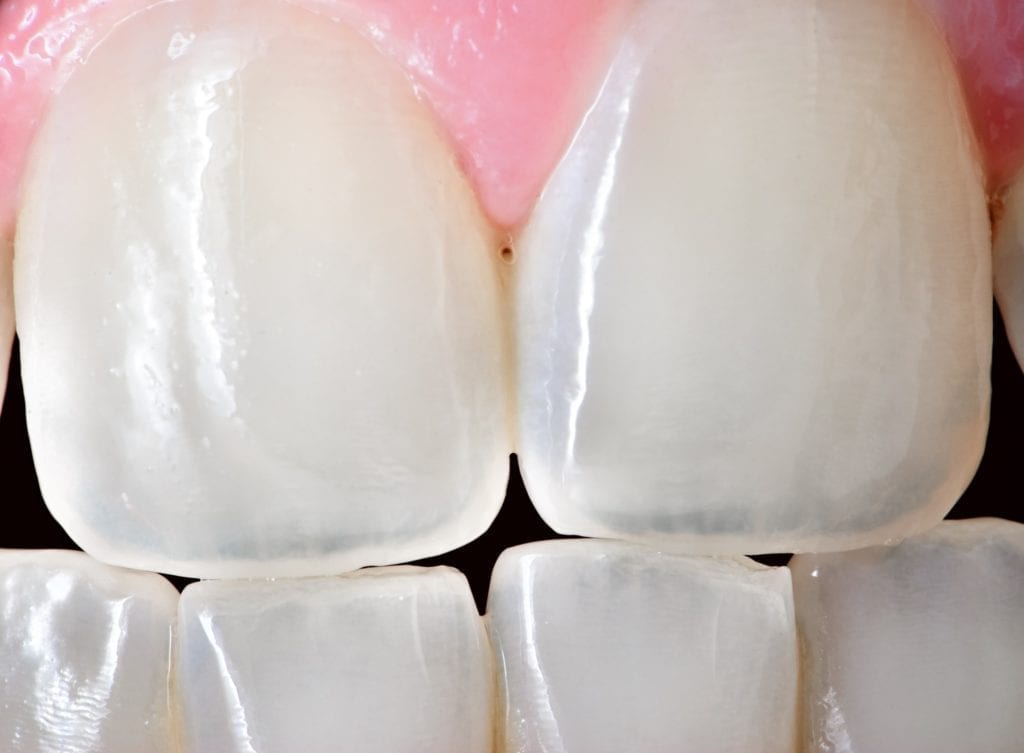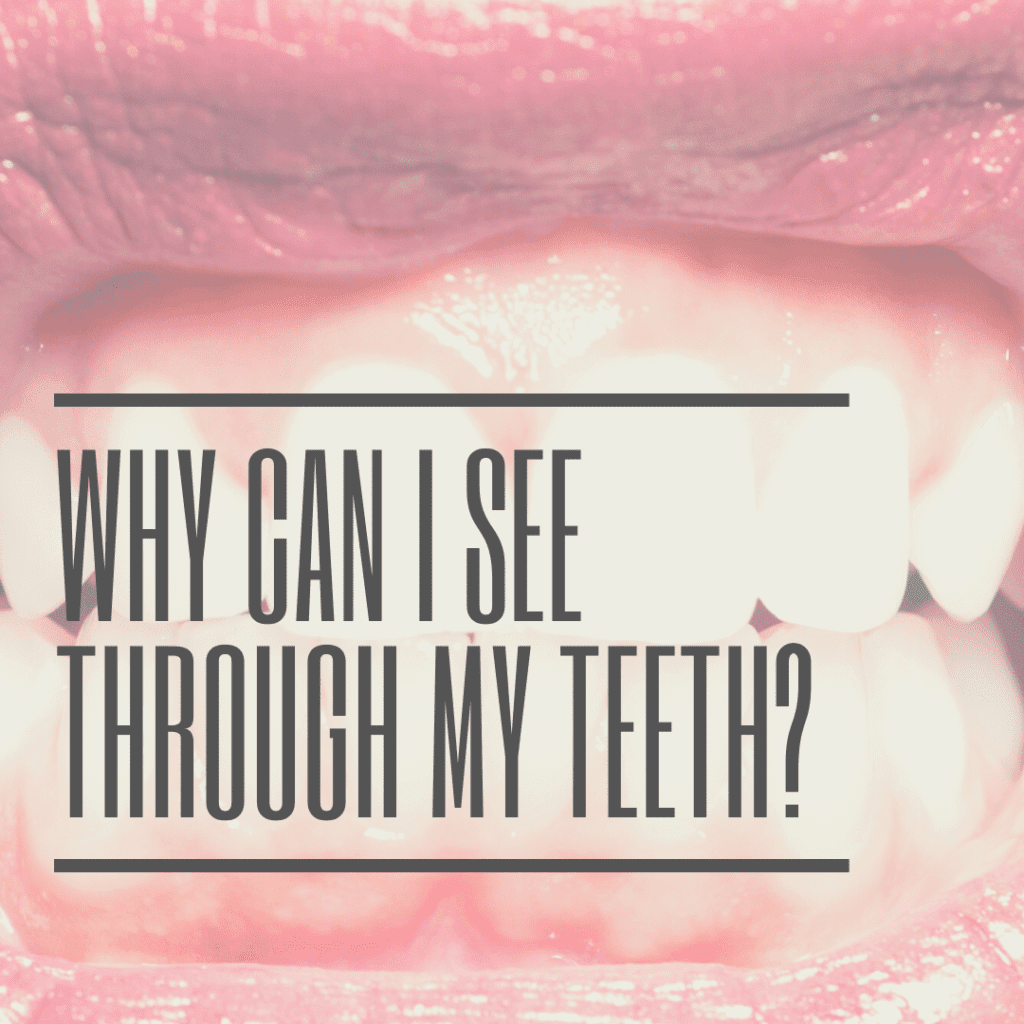Do the tips of your teeth look see through? If so, then you may have something known as translucent teeth. Just as its name suggests, translucent teeth are teeth that are partially able to be seen through. Although this is a more common occurrence than you may think, translucent teeth can actually pose a threat to your oral health. Not only that, but many people don’t like the fact that their teeth appear to be see through. Luckily, there are ways to prevent and treat translucent teeth.

First things first, we need to take a deeper look at why your teeth can go from being completely opaque to translucent along the edges. The simple answer is that your teeth appear to be translucent along the edges because the enamel has eroded away and become very thin. Enamel is the outermost layer of your teeth and is responsible for protecting the inner dentin and pulp layers. While enamel is very strong, it can still be worn down over time. When enamel wears down, two things happen: enamel loses its color and the underlying dentin shows through. However, since dentin does not extend to the edges of your teeth, the edges only contain enamel, which is why they look translucent as the enamel breaks down.
Enamel erosion can be caused by many things, however some of the most common culprits are are:
Acidic Diet
Certain foods and beverages pose a threat to your tooth enamel due to their high acid content. You see, tooth enamel starts to demineralize around a pH of 5.5 or lower. Since acidic foods and beverages have lower pH concentrations, they can cause the entire pH of your mouth to decrease, making it more acidic. Acids are known for their ability to erode surfaces, and your tooth enamel is no exception. The more acidic your diet, the higher your risk of developing translucent teeth.
Medical Conditions
There are also certain medical conditions that can pose a threat to your oral health by exposing your teeth to stomach acid on a regular basis. These conditions can include heartburn, acid reflux, morning sickness, bulimia, and any other condition that causes frequent vomiting. Unfortunately, stomach acid is highly corrosive and can damage your enamel when it frequently comes in contact with it. Celiac disease has also been known to affect the development of enamel, causing it to be thinner than normal. All of these medical conditions can increase the risk of developing translucent teeth.
Enamel Hypoplasia
Enamel hypoplasia is a condition that affects the development of tooth enamel, causing it to be thinner than normal or non-existent in some rare cares. Additionally, this condition can also cause white spots, pits, or grooves to form on the enamel as a result of poor development. Due to the fact that people with enamel hypoplasia develop less enamel than normal, they are at an increased risk of developing translucent teeth.

How do I get rid of translucent teeth?
Since tooth enamel is not a living structure, it can not be regrown once it has worn away. Therefore, preventing enamel erosion by minimizing acidic foods and beverages is often recommended by dentists. However, once the damage has been done, the only way to get rid of translucent teeth is to visit your dentist for restorative treatments. Not only will these restorative treatments improve the appearance of your teeth by making them opaque once again, but they will also protect your teeth from tooth decay. Here are some of the most common treatments for translucent teeth:
Bonding
Dental bonding takes composite resin and bonds it to the surface of your tooth. Since composite resin is able to bond easily with enamel, this method requires little preparation and is considered to be non-invasive. It can also easily be completed in a single dental appointment, since the composite resin is applied to the tooth and hardened in a matter of minutes. The results from dental bonding generally last about 5-7 years before needing to be replaced.
Veneers
Veneers are thin shells made from composite or porcelain. These thin shells are then cemented to the front side of translucent teeth in order to improve their appearance and protect the underlying enamel. Unlike dental bonding, however, veneers usually take about two appointments to complete since they are fabricated by a dental laboratory. Depending on your case, a thin layer of enamel may also need to be removed in order to place the veneers properly. Once placed, you can expect veneers to last about 10-15 years.
Crowns
Dental crowns are tooth-shaped caps that are made to fit over the entire tooth. Your dentist may recommend a crown if you have enamel erosion over a significant amount of your tooth or if they think that bonding and veneers are not enough. Like veneers, dental crowns are fabricated in a dental laboratory and take about two appointments to complete. Dental crowns also require that some of your natural tooth structure is removed to accommodate the proper placement of the crown. Once placed, dental crowns also last around 10-15 years.

Dr. Admar holds dual certificates — a Bachelor of Dental Surgery (BDS) in 2010 from India and a Doctor of Dental Surgery (DDS) in 2014 from Canada. He is now a full time practicing dentist in Kamloops where he provides a variety of services. Dr. Admar spends hundreds of hours in continued dental education to stay up to date in cosmetic and implant dentistry and he has achieved several advanced qualifications.


